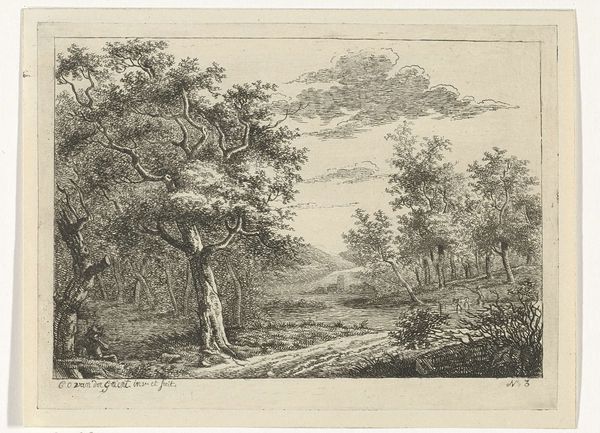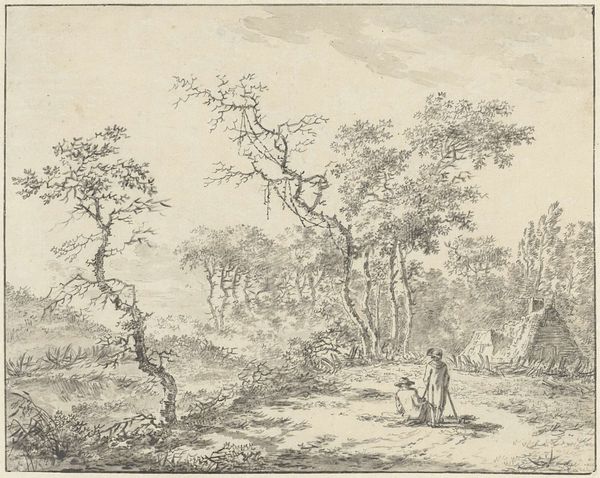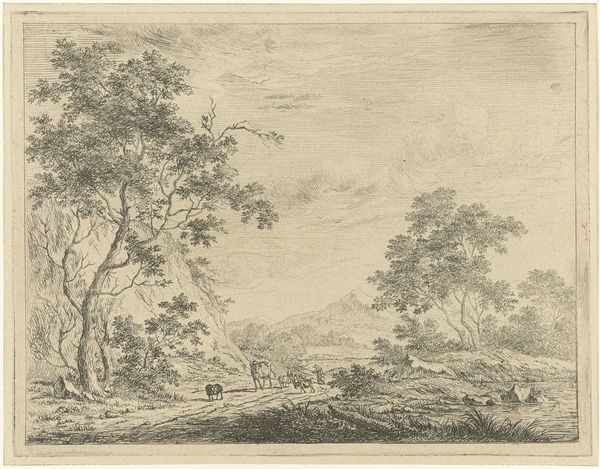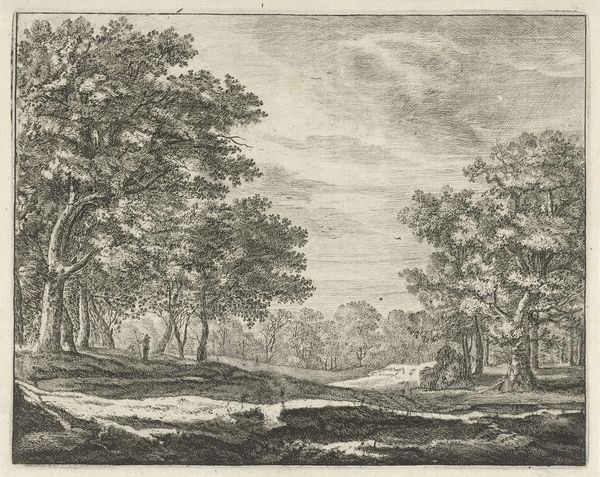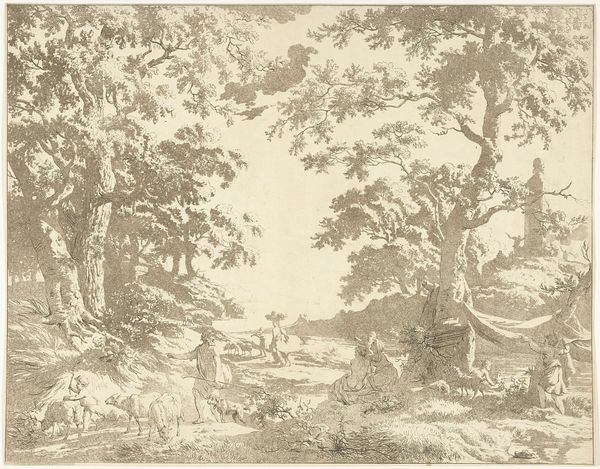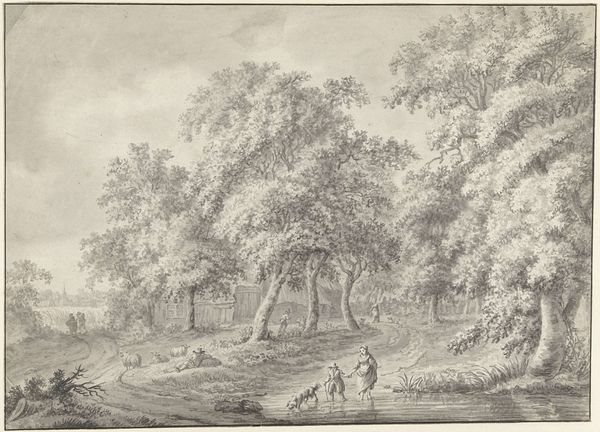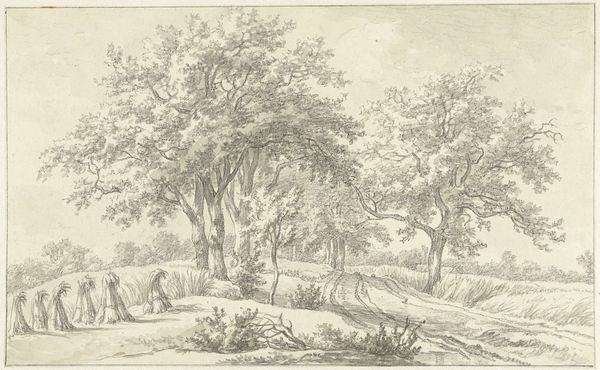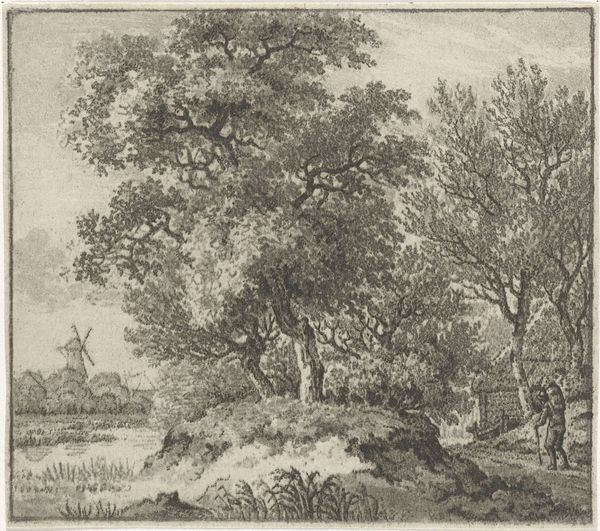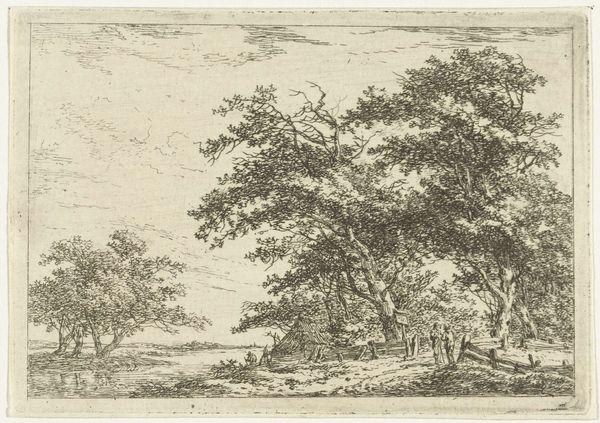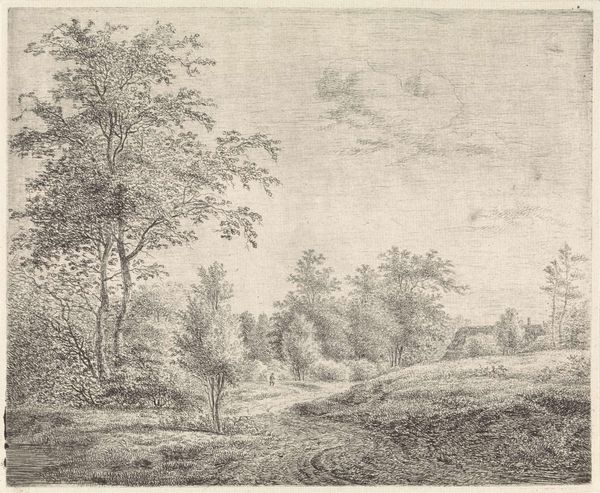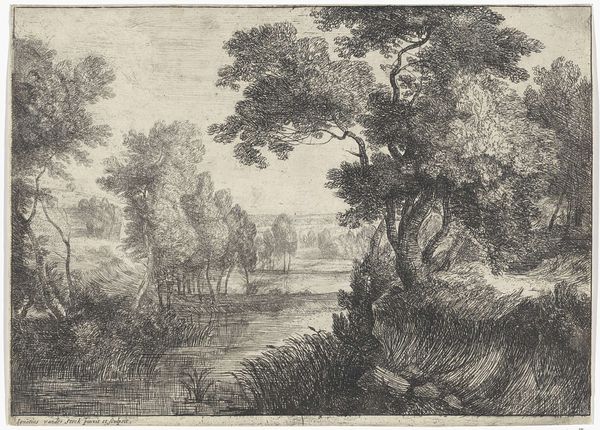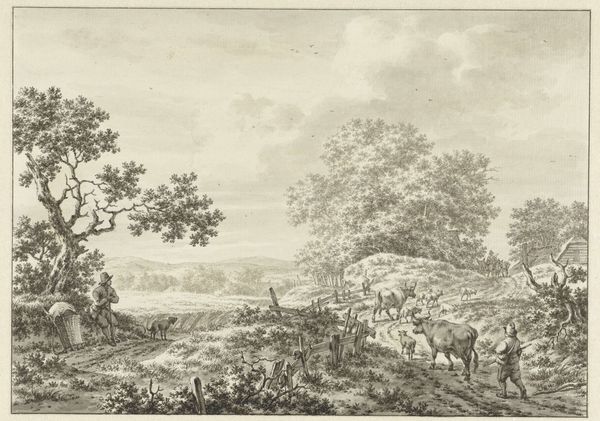
drawing, ink
#
drawing
#
neoclacissism
#
pen drawing
#
landscape
#
ink
#
cityscape
Dimensions: height 186 mm, width 255 mm
Copyright: Rijks Museum: Open Domain
Curator: Good morning. Today we're looking at a piece titled "Zuidelijk landschap met kasteel, vee en wandelaars," which translates to "Southern Landscape with Castle, Cattle and Walkers" created by Johann Heinrich Müntz in 1773. It's a drawing, made with pen and ink. Editor: My first impression is quietness. A pastoral scene, but with an oddly detached feeling. It feels staged. Curator: Yes, there's a deliberate composition at play. Müntz, while working within landscape conventions, was also heavily influenced by Neoclassicism. Consider how landscapes were often employed as idealized settings reflecting social order. Editor: The way the pen and ink is used creates an interesting texture. Almost industrial in the uniformity. Not exactly evoking the raw, natural experience, more the *idea* of a rural scene, mediated by specific labor practices. It looks reproduced and repetitive Curator: Indeed. Look closely, and you see how Müntz utilizes light and shadow to create depth. The architectural element of the castle in the distance reinforces this idea of ordered space and ownership, mirroring the contemporary landowning structures and the role landscape played in social status at the time. The consumption of landscape. Editor: And those walkers in the foreground almost look like props. Their leisurely stroll contrasts sharply with the unseen labor sustaining the whole idealized vista. It's like they’re the target audience, consuming an aesthetic while remaining totally separate from the productive processes that constitute the land itself. How was this type of work produced, circulated, and consumed back then? Were these scenes largely for private consumption in portfolios and albums? Curator: Exactly! These drawings often circulated amongst wealthy patrons, reinforcing existing hierarchies. So what seems like an innocent pastoral scene is actually deeply implicated in power structures and the romantic idealization of country life. Editor: I keep coming back to the ink itself. What ink would they use? It’s not from nature like earth pigment but from a manufacturing practice. The entire scene is mediated. It is about showing the industrial reach and influence? The landscape can be consumed as a product and controlled. Curator: It certainly provokes interesting considerations on how nature and social roles intertwined in the late 18th century, particularly with regards to how ideas can also become products to control. Editor: Agreed. Seeing it through the lens of the period’s materials offers a whole new understanding.
Comments
No comments
Be the first to comment and join the conversation on the ultimate creative platform.
